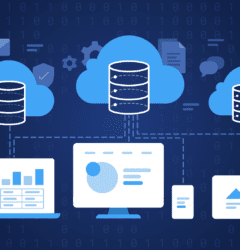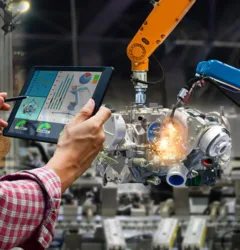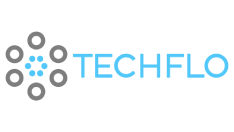02 Oct

In a groundbreaking move poised to revolutionize our understanding of the human brain, Google Research, in collaboration with esteemed partners, has embarked on an audacious journey: mapping minds, the intricacies of a mouse brain. This venture, part of the emerging field of connectomics, is set to illuminate the complexities of our own minds, potentially unlocking the secrets behind mental illnesses and neurodegenerative diseases like dementia.
The ongoing project is not just a scientific endeavor; it’s a testament to the power of cutting-edge technologies in reshaping our understanding of the brain.
The Connectomics Revolution
The human brain, with its billions of interconnected cells, remains one of the most enigmatic structures in existence. While researchers have made strides, understanding the complete network and its implications for diseases has remained a challenge. The connectomics field represents a paradigm shift in neuroscience. By meticulously mapping the connections between neurons, scientists gain unprecedented insights into brain functionality and potential malfunctions. While early efforts focused on simpler organisms, the push to map larger brains, including the human brain, has been hindered by technological limitations. Until now.
Google Research, in collaboration with renowned institutions, is set to change this narrative. Through a $33 million project, supported by the prestigious Brain Research Through Advancing Innovative Neuroethologies (BRAIN) initiative at the National Institutes of Health (NIH), researchers are diving deep into the mouse brain. Their goal? To map 2-3% of the mouse brain, specifically targeting the hippocampal region, a hub for memory encoding, attention, and spatial navigation.
Flood-Filling Networks and Deep Learning
At the heart of this venture lies the ingenious use of flood-filling networks powered by deep learning algorithms. These networks, akin to digital architects, meticulously trace the intricate pathways of neurons within the three-dimensional landscape of the brain. By employing deep learning, these networks can ‘segment’ each neuron’s path with unparalleled precision. This technological feat allows researchers to create detailed maps, providing insights into the brain’s inner workings.
Self-Supervised Learning Technology: SegCLR
Another technological marvel aiding this exploration is the self-supervised learning technology known as SegCLR. This innovation goes beyond basic segmentation. It autonomously extracts vital information from segmented volumes, identifying specific cell types and components within neurons. This level of granularity enables scientists to delve deeper, unraveling the mysteries of neural circuits and their functions.
Scalable Infrastructure: TensorStore and Neuroglancer
In the face of colossal data generated by this project, scalable infrastructure plays a pivotal role. TensorStore, a robust storage solution, and Neuroglancer, a powerful visualization tool, form the backbone of Google Research’s core connectomics infrastructure. These advancements empower researchers, allowing them to handle vast datasets with ease and precision. With the ability to operate at previously unthinkable scales, scientists can explore neural connections at a level never before possible.
Conclusion
These technological advancements not only enhance our understanding of the mouse brain but also pave the way for unprecedented insights into the human brain. By deciphering the intricacies of neural networks in a mouse brain, researchers gain valuable knowledge that can bridge the gap between basic science and clinical applications. As technology advances, so does our ability to unlock the secrets of the mind, ushering in an era of neuroscience breakthroughs that hold the promise of transforming lives.
Read how AI vs Human Intelligence: Can Machines Ever Truly Replicate Human Cognition?



